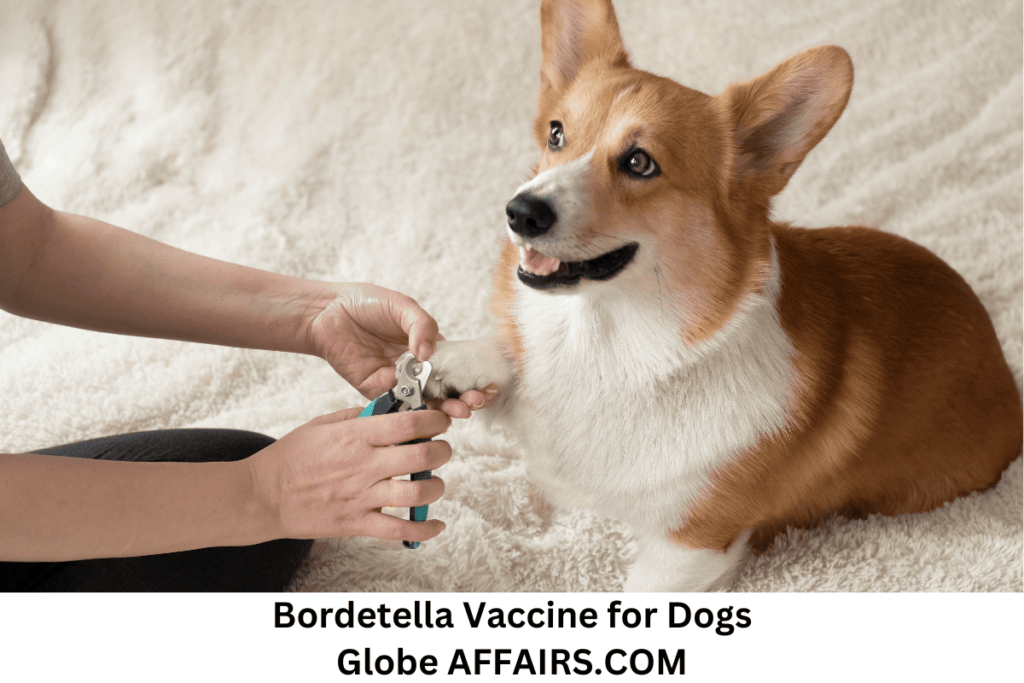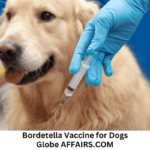An overgrown nail isn’t merely a cosmetic crisis, but can present a practical emergency in any dog, from puppies or small dogs to big dogs. One day, your little friend might place a damp paw on your leg, and the next thing you know, you’re looking at daggers instead of manageable claws. It doesn’t take long until a pet is painful on the walk, which makes trims that much more important.
The idea is simply to not allow them to build up in between, so remembering to clip those nails on a regular basis — once or twice a week. If you intend to stick to the straight and narrow but find it challenging to do so, consider using reminders.! (Use such tools as clippers for easy cuts, and make sure the nails are clipped just short enough to avoid tweaks. Well taking care of nails will help to a significant extent to solve the problem of overgrown nails. Seek out vetted sources, such as wagwalking, that offer grooming and upkeep tips.
Why Your Dog Fights You When You Try To Trim Its Nails
There are generally two reasons that your dog’s nails have turned into something out of a Halloween monster. First, your dog might simply hate getting its nails trimmed, which might make it quite difficult for anyone to get close. The second reason might be that you haven’t had time so far to cut them in the way you need to. Whatever is causing this behavior, it’s important to get your dog’s nail trimming back on track. It can take several weeks of tiny little snips to get back to a healthy length again.

5 Proven methods to cut your dog nails
While not all of these methods may work for your dog, but one of them centrainly will. As a dog owner, i know the hustle one has to go through while doing this. Let me know in comments what method worked four your buddy.
Over Time Method
- Taking It Slow: Rather than taking off the whole overgrown nail at once, trim a small amount at a time so that your pet can handle the experience.
- Let the Quick Retreat: If your horse’s hooves have grown long, trim regularly to encourage the quick (the sensitive part) to pull back. It simplifies future trims a little bit.
- Be consistent When: If necessary at least once a week to ensure not getting nails too long and maintaining shape.
Positive Reinforcement Method
- Familiarize: Before leaning on clippers or trimmers, introduce your tools to your dog so she can get used to the feel.
- Use Treats: Be sure to reward your dog with treats and positive words to build up a positive experience around the process after each successful trimming session.
Dremel or Grinder Method
- Try a Nail Grinder: A Dremel or grinder can make nail trimming easier and less stressful (for both of you) as long as your dog is okay with the process.
- Go Slow: Do your grinding in small areas to prevent cutting too low into the quick, which can hurt your pet.
Quick-Snipping Method
- Make Trimmings Small and Normal: Trimming into small parts of your nails very coupes, coming up with a nail that never reaches that point, is manageable.
- So, keep it short — this technique allows for quick nail trimming but for your dogs to have healthy nails at the same time.
Multi-Step Clipping Method
- Take it in Stages: If your dog has tough or adamant nails, split the trimming process up over multiple sessions, to make it easier and less stressful.
- Minimal Stress, Maximum Benefit: This method minimizes the stress on your canine friend while ensuring that you get them at the right length over time.
What do overgrown nails look like in dogs?
When a dog’s nails click on the floor, this is a very clear indication of discomfort and problems with locomotion. While long nails can be uncomfortable, issues from long nails could spread given the size to a quick that travels too deep to be considered healthy and makes nails more prone to fracture, causing discomfort, bleeding, even a disease. Your dog may start walking awkwardly, or turning phobic and fearful of slippery footing, or completely avoiding hard floors.
Neglect can also slowly affect the paw, pads, and toe joints too, even potentially leading to some skeletal deformities. If they’re long, don’t clip them all the way short in one go, as that can be painful to your pet. Instead, visit a vet or groomer that can slowly trim down the nails, allowing the quick to retract. It ensures that your dog is comfortable and has healthy nails as well.
What is quick in dogs and how to identify it
The quick is a vital area of a dog’s nail and is made of a blood vessel and a nerve. It’s more detectable on nails that are light in color, and you can see it from the underside of the nail if you hold the paw up to the light. The quick resembles a nail-nail and extends down from the paw. You should always pass the quick because your dog will have bleeding and pain.
On light-colored nails, the quick is readily visible — it looks like a pink triangle embedded deep inside the outer shell. With dark or black nails, you generally have to work a little harder, but it can still be done. For help, try shining a bright flashlight underneath the nails — this will make the quick appear as a dark spot closer to the hoof and the light will transilluminate the outer part of the nail. 574: You start making tiny cuts. As you trim it should turn white around the cut before the middle blackens. At this point you’re near the pulp part (the white stuff on the inside of the peel), and it’s time to stop trimming. Warning—getting too close to the quick can pinch and hurt your pup.
5 Tips For Avoiding The Quick When Cutting Dog Nails
A dog nail is made up of two parts — the hard nail and the soft cuticle known as the quick that is rich with blood vessels and nerves. With light-colored nails, the quick appears as a pink area within the translucent white nail. The quick is harder to see, though, on dark-colored or black dog nails. It may appear to be one solid piece when viewing from above, but the underside of your nail should reveal a groove partitioning the hardened nail from the soft cuticle.
If you want to be able to trim safely, do not cut into the quick: shine a flashlight, cell phone light or any other light source on the paws you are going to trim, and you will be able to see where the quick is. Also, if the nail is not being trimmed on a regular basis, then the quick might overgrow, elongate and extend into the tip of the nail which means that you can no longer keep the nails short getting harder and harder to cut the nail but not the sensitive area. With the help of your veterinarian or groomer, you can slowly trim and guide the quick to recede — without hurting your pup or causing them pain.
The Risks of Long Dog Nails
If long nails are not trimmed in time they may cause severe pain and also result in many health issues. Long nails that tap against the floor force the toes to splay, putting undue pressure on the anatomy of the foot and leg. Over time, this could cause tendon injuries or lead to deformed feet.
And even if long nails are currently not bothering your dog’s health, they still feel awful for your dog. The quick, which has nerves and blood vessels, grows with the nails, making it hard to keep them clipped to a healthy length. Fortunately, if you file it slowly and consistently, over time the quick recedes and it becomes more structurally simpler to maintain your nails. In fact, long nails will also cause “pain from curling into the paw pad,” which can also cause infections. And long nails can catch on toys and furniture, which poses an injury risk for your child.
How to Prevent a Dog from Bleeding their Nails?
- Keep Your Emotions Under Control : If you’re riled up, your dog can become agitated, which makes you less able to deal.
- Apply pressure on where the bleeding is: Find some cloth, gauze and put that on the place that is bleeding, the nail. It allows the blood to clot — especially in cases of light bleeding.
- Styptic powder: Pour styptic powder onto the bleeding nail. It contains ferric subsulfate, which speeds up the process of blood clotting.
- If it is a heavy flow, you might have to replenish the styptic powder until the flow has ceased.
- Alternatives: Styptic powder isn’t always in the home pet supply kit, however, and if that’s the case, cornstarch, baking soda or even the flour you bake your bread with can also help staunch the flow of blood.
- Ease up when bleeding ends: After the bleeding stops, you can relax when you release the pressure, knowing your dog is out of the woods.
15 Signs Your Dog Might Be Having Nail Problems
- Broken or Cracked Paws: And if your dog’s nails are broken or cracked, your pet may bleed or be in pain.
- Odd Directions or Shapes: If a nail grows in a direction or shape that does not fit with the rest of the nails, it may signal a problem.
- Brittle nails : If your nails are breaking easily or cracking, it could mean they lack moisture or are related to health problems.
- Pus or Dischargeives: Pus or discharge that collects around the nail may indicate an infection or inflammation around the nail.
- Ingrown Nails: An ingrown nail develops when a nail grows into the skin, causing pain, swelling, and infection.
- Scabbing Around a Nail: Scabbing or irritation near a nail could suggest an infection or other issue with the nail.
- Paw Change Due To Excessive Licking Or Chewing: If your dog is licking or chewing at its paws, it may need its nails clipped or may just be itchy.
- Nail Biting: it means when dogs bite their nails they feel pain or discomfort.
- Limping or Walking Problem: When the nails hurt they can cause limping or walking problems.
- Sore or Tender Paws: Redness, swelling, or generalized tenderness around the paws may signal nail problems.
- Nail Beds (Redness or Swelling): Redness or swelling around the individual nails or the entire paw can occur in case of inflammation or even infection.
- Change in the Colour of Your Dog’s Nail: Abnormal change in colour of your hangnail like yellow or black can be a sign of a problem or disguise.
- Nails with irregular growth: If your nails are growing too wide (or too narrow), it may be a sign of a medical condition or infection.
- Cracked or Split Nails: If your nails start cracking or splitting easily, it could signal a cause by an injury or other condition.
- Bleeding nails: These can occur when nails are injured, infected, or excessively pruned.
First Aid For Broken Nail In Dogs
A broken dog nail is something that you will need to address right away in order to avoid further trauma and to give the nail the best shot possible of growing back. If if you notice your dog yelping or limping, they could be in pain and you can check the paw for a broken nail. Starting with, you would snap your dog on a longline to control them better and prevent movement where they would be able to bite or twist too much, it’s a hug on them or a muzzle if needed Once your dog has calmed down, use a towel or gauze to apply gentle pressure to the bleeding toe to help stop the bleeding. If it doesn’t stop after five to ten minutes, reach for a styptic pencil, styptic powder, or silver nitrate stick, all available at your local pet store or pharmacy. Right on the spot, baking powder or flour can be used, or even dipping the nail that’s injuries into a bar of soap will also work to stop the bleed.
In such cases of a hanging strand or ripped tip, you will have to trim it away. Trim the hanging part of the nail with a pet nail clippers. For more serious cases, you should visit the vet for assistance. Once you’ve clipped the nail, you want to clean the area (warm water is recommended) to remove dirt and debris and then apply antiseptic to minimize the risk of infection.” During the healing process, make sure to check for any signs of infection, and follow up with your vet as needed to ensure the paw heals properly.

